How to Get Blood Out of Your Clothes
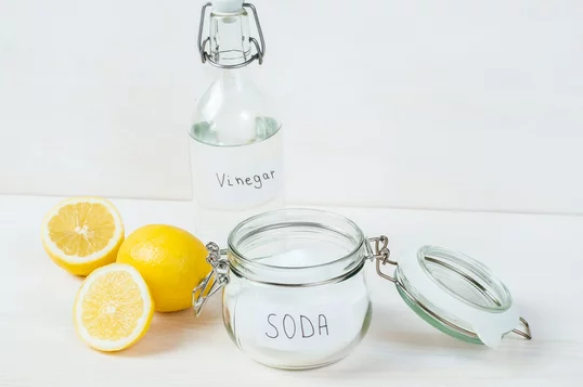
Photo Credit: Adobe
Finding blood stains on your clothes can be distressing and may seem difficult to remove. Whether it’s from cuts, period stains, or whatever, we’ve provided some helpful tips to remove fresh or dried blood stains from your fabrics with easy-to-use home supplies. Thanks to these well-researched and tested steps, you no longer need to discard your favorite fabrics because of these stains. We’ll show you how to get blood out of clothes!
Some essential items you’ll easily find sitting in your medicine cabinet, such as hydrogen peroxide, have proven to help remove blood stains from your laundry items.
General Information on How to Get Blood Out of Clothes
You should wash delicate fabrics such as wool, silk, spandex, and leather with caution. It is best to read care labels on clothes for proper instructions before attempting to remove blood stains. If a care label states “dry clean only,” it should be taken to the dry cleaners as soon as possible before attempting home remedies.
This article will discuss how to get blood out of clothes that you can clean with homemade remedies.
How to Remove Fresh Blood Stains from your Clothes
If you find fresh blood stains on your clothes, it’s best not to let them dry because it’s easier to remove while still new. You’ll need to act quickly to stand a better chance of removing it easily and completely. It’s essential to remove the stain first before washing the entire fabric.
Tips: The first step is to remove excess blood from the fabric using a toothbrush or your fingernail.
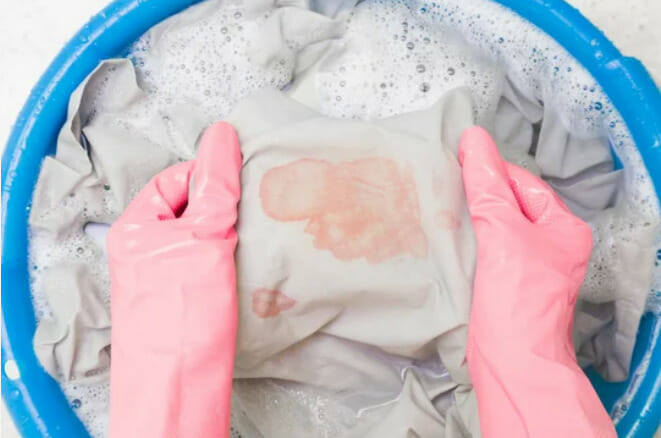
Photo Credit: Adobe
Your best bet when it comes to blood stain removal is cold water. Running it under cold water or soaking it in cold water should be done immediately to remove as much blood as possible.
You’ll be surprised how much stain gets out with this simple step. Sometimes, that’s all you need to get these stains out of your fabric, especially when you act fast enough.
Tip: Rub hand soap on the stain and scrub with fingertips under running water until you remove it.
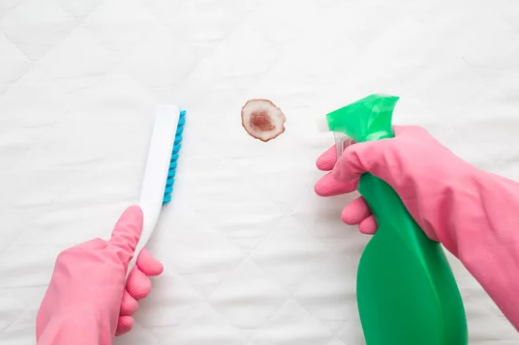
Photo Credit: Adobe
Everyday household staples such as hydrogen peroxide, white vinegar, or lemon juice are great options for tougher stains and are safe to use with most light or white fabrics. You might want to try this first on a hidden spot, as it can lead to loss of color on darker fabrics.
Using a sponge soaked in lemon juice or hydrogen peroxide, blot out the stains and run it under cold water. Repeat until you remove it.
Baking soda has proven helpful in getting rid of blood stains and is very readily available. It is suitable for darker clothing or fabrics that react to hydrogen peroxide and other fabric-safe bleach.
You’ll need to mix baking soda and water until a paste is formed. Then, you can apply it to the blood stain. Let it sink in for about thirty minutes to an hour, and then rinse out with cold water.
Soak the clothes in warm water with laundry detergent, particularly enzyme-containing stain remover. Soak until the stain is gone.
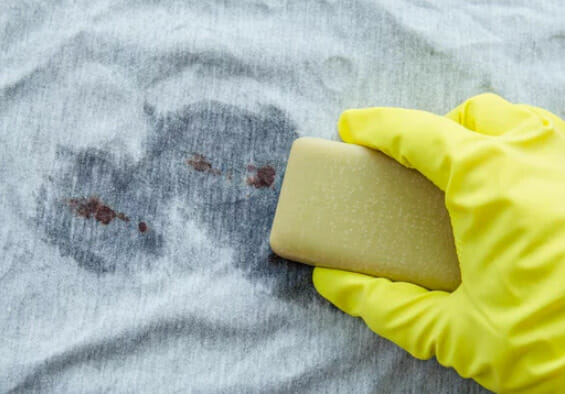
Photo Credit: Adobe
Avoid heating clothes stained with blood! Soaking your stained garment in hot water or placing it in a dryer will make it more burdensome to remove the stains. You should only heat or dry clothes when you have completely removed the stain from the fabric.
Remember! Blood stains may need a few tries to be removed entirely. So, if your efforts seem futile after the first attempt, don’t give up! All hope isn’t lost. A couple more tries and viola! Your clothes will be free from blood stains.
Read more: How to Shrink Your Jeans to Fit Perfectly
How to Remove Dried Blood Stains from your Clothes
Unfortunately, blood may stain your clothes while you’re away from home and unable to reach basic remedies to remove the stain while it’s still fresh. This means you would have to deal with blood stains that have dried up.
It might look difficult to remove the stains at first, but don’t worry! We’re giving you some proven tips for removing dried stains of blood from your favorite fabrics.
Cold water! Yes, cold water is still your go-to for dried blood stain removal. Something as common as table salt or a saline solution works great. Rub it repeatedly over the stained area with your fingertips until it’s gone. It works like magic!
Pre-treat fabric with bar soap and a fabric-friendly mild bleach. You can use a heavy-duty stain remover such as Carbona Oxy-Powered Laundry Soaker, Clorox 2 Laundry Stain Remover, and color boosters to remove blood stains.
Soak fabric in cold water and add a tablespoon of ammonia for stubborn stains. Soak-in time may take several hours, depending on the stained material. Then pre-treat and launder the fabric. Repeat until you completely remove the stain.
How to Remove Blood Stains from your Jeans
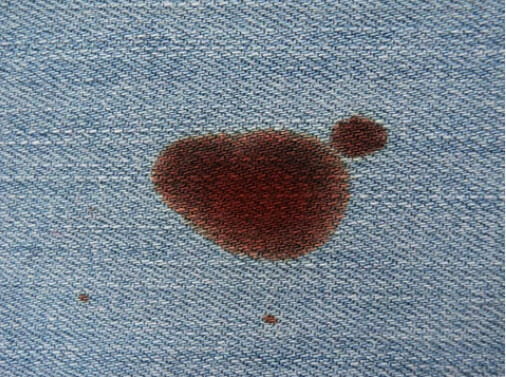
Photo Credit: Adobe
Jeans are generally much thicker than traditional fabrics and require a slightly different technique to remove stains.
What should you do first? You guessed right, cold water! Dampen a small piece of clean cloth with cold water. Blot the stains out from the inside of the jeans until the damp cloth is free from blood. Try to avoid scrubbing, as this might cause the stains to spread.
After blotting out the stains, soak the jeans in cold water with mild laundry soap for about 30 minutes to an hour. You can add salt or baking soda while letting it soak.
When spot-treating, you should avoid using hydrogen peroxide for jeans because it can change the color of your denim. A mild laundry soap or detergent is always enough for denim fabrics.
If, after soaking and spot-treating, the stains persist on your jeans, it may be time to give ammonia a try. Soak the jeans in cold water with laundry detergent and a tablespoon of ammonia. Then allow it to soak for several hours.
Conclusion
Always remember: The quicker you act, the easier it’ll be to get blood stains out of your clothes. If you notice blood stains on your clothes while in or out of the house, you should quickly follow the above steps to remove them.
Cold water works like magic, so don’t be afraid to use it. Normal wash with other household items like salt and hydrogen peroxide also helps to remove blood stains from your clothes.

